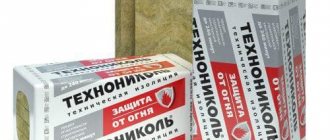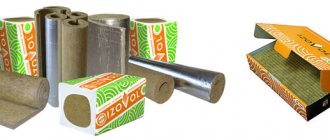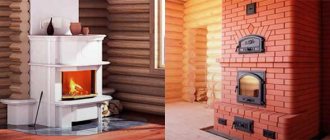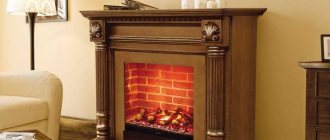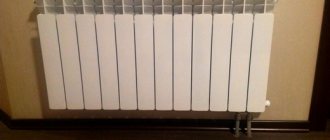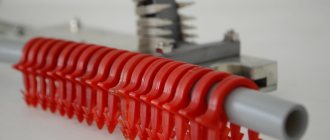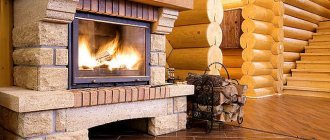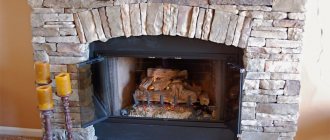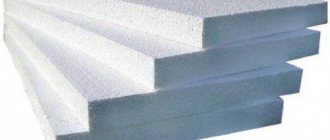Heating a home is included in the list of basic home improvement tasks. Widespread gasification was supposed to solve this problem by installing boilers. However, statistics show that not all owners are committed to using gas equipment.
Since ancient times, a fireplace in a room had the purpose of heating a room and making it possible to cook food. Around the Middle Ages, the attitude towards the fireplace has changed somewhat. It has become a symbol of wealth and prosperity in the home. Today, fireplaces do an excellent job with their primary task of creating a decorative appearance, but more and more people are beginning to remember their intended purpose.
Unfortunately, not all electric fireplaces are equipped with heaters, and wood or gas models have low efficiency. A revolution in the use of solid fuel was made by a pellet fireplace that runs on wood pellets - pellets.
Small original heating device
Design features
If you look at this heating device from the outside, it is very similar to a conventional wood-burning stove made of metal. Cubic shape with a door for storing fuel, firebox (steel or cast iron), chimney. But there are also differences.
For example, the door is not solid, but glass, so that the flame of the fire can be seen, and at the back of the body there is a hopper where pellets are poured.
Air supply system
Manufacturers have provided for the installation of two fans in the design: one to supply oxygen to the fuel combustion zone, the second is intended to circulate air between the body of the unit and the walls of the combustion chamber. The air heated in this way comes out of the holes located in the upper part of the device. It turns out that a pellet fireplace generates heat in two ways: from the body itself and with the help of heated air in the inter-chamber space.
Ash pan
The most interesting component of this heating unit is the ash pan. It consists of two parts.
- A rotating bowl that throws the remaining burnt fuel down, thus removing ash from the combustion chamber.
- A drawer, which is the ash pan.
The bowl rotates at a certain frequency, which can be set on the fireplace control unit.
Portable tile heater
Small rooms, a garage, a greenhouse, a tent can be conveniently heated with a portable tabletop gas heater. Such a device is constructed from a quadrangular flat tile equipped with a metal grid.
Assembling this device involves attaching part of the gas stove to a metal casing. Due to the installed combustion chamber, the air is heated to the desired temperature, and several or one fan ensures the supply of warm air and its circulation throughout the room. The assembly of such a device consists of several stages and does not require special technical knowledge.
The first stage is working with measuring tools. You need to use a ruler or tape measure to take accurate measurements from the quadrangular tile. This will be required to determine the parameters of the heater housing. After taking measurements, you need to cut out blanks from a tin sheet using scissors. Next, the blanks are fastened with rivets into a casing.
Then the casing is fixed with hook strips on the tile. In order for it to be quickly removed and mounted back, you need to make a movable bar. Such a bar can be easily made using a small spring, which is connected to a lifting lever.
Thanks to this solution, in the future it will be possible to easily remove the casing for cleaning or transportation. The homemade scheme under consideration assumes the presence of a special ventilation system. To install it you will need a simple fan without any additional complex devices or materials.
A small fan from any home device is suitable for installing ventilation. You can use scissors to adjust the size. Trimming and giving the desired shape and size to the fan blades takes about half an hour. After carrying out these steps, you need to install a ready-made fan behind the heater housing so that there is draft inside the housing.
You also need to install a metal combustion chamber. The combustion chamber body must be studded with many small holes. They can be made using an electric drill and a metal drill or using a hammer and nail. The holes should be a short distance from each other.
You also need to purchase a rubber hose with an adapter to connect the flat tile to a gas pipe or gas cylinder. A fan installed at the rear of the casing ensures the supply and distribution of warm air over a fairly wide range in the heated space.
Principle of operation
It all starts with pouring granules into the hopper. Its volume is determined by the power of the unit itself, for example, a fireplace of the Thermal brand (Macedonia). If the power of the unit is 6 kW, then the volume of the fuel bunker is 12 kg of pellets. Power 8 kW – hopper volume 15 kg.
From the bunker, fuel is fed into the furnace using an auger, where it is burned. It is important to consider combustion modes here. A pellet fireplace, like a regular one, operates in two main modes: ignition with heating and normal mode. In the first mode, the fuel is ignited from the door side, while all dampers (chimney, air supply) open to the maximum.
As soon as the unit heats up well, the dampers close. It is important that the fireplace draft is normal. The operating feature of a fireplace-type heating unit is based on a dosed supply of fuel to the combustion zone.
Comparison with similar devices
The cost of electricity, as well as gas, is constantly growing, which means that pellet stoves are profitable to buy, first of all, from the point of view of benefits.
Since they are completely independent of external sources, the system’s dependence on suppliers automatically disappears - the home owner himself decides how much pellets he needs to purchase, for example, for one winter season.
Main differences
The main difference between fireplaces using wood pellets and stoves using dry wood is that they do not emit carbon dioxide. When wood burns, it releases carbon dioxide, and this is very dangerous for the health of the inhabitants of a country house. The ash that is formed after the combustion of pellets can be used as fertilizer on the site or in the greenhouse.
Another distinctive feature of such devices is that they can be installed in homes when there is no gas pipeline nearby or the possibility of heating using an electric unit. Moreover, even if both gas and electricity are available, if they are turned off, the pellet stove will be a backup system for heating the cottage. This is especially true in extreme cold. With proper operation of such furnaces and timely maintenance work, they can last more than 20 years.
Varieties
Pellet fireplaces on the modern market are represented by three models. Their separation is based on the method of heating rooms.
- Unit with convection heating method.
- Using air ducts.
- Pellet fireplace with water pipe circuit.
Convection models
This is the design of the device discussed above. The only thing that can be added is that these fireplaces are used to heat one room, so their power is not very high, from 3 to 5 kW.
Models with ducts
This option is more powerful, and such devices are used to heat several rooms in the house. To do this, the fireplace itself is installed in one of the rooms. Here it works according to the principle of the first model, heating the room itself. Instead of a chimney, metal air ducts are diverted from it, which are placed in other rooms according to a certain pattern.
Schemes can be different: located on the floor, under the ceiling or at the window sill level. It is important to follow fire safety rules here. At the same time, the draft of the fireplace is provided by an exhaust fan.
With water circuit
Again, we note that a pellet fireplace model with a water circuit is a design in which a heat exchanger is installed or a water jacket is used (this is the gap between the walls of the firebox and the fireplace itself). It is necessary to draw your attention to the fact that fireplaces with such an internal structure are heating units with a closed combustion chamber. Oxygen is supplied only using a fan or turbine.
Through two pipes, the device is connected to the supply and return circuits of the water heating system of the house. Currently, this variety is one of the most popular among Russian consumers.
Firstly, the device performs the functions of a regular open-flame fireplace, that is, it is an element of interior design. Secondly, it performs the functions of a water heating boiler. Thirdly, it heats the room in which it is installed.
Please note that the modification of pellet fireplaces with a water circuit is installed only in closed heating systems where a circulation pump is installed.
This type of heating device can also be used for underfloor heating systems. The connection can be made either for a separate circuit or for a combination: radiator heating plus heated floors. In the second case, a collector unit with wiring along the circuits must be installed.
Advantages and disadvantages of systems
In most European countries, as well as in the United States of America, wood pellet heating systems have been used to heat private homes for many years.
This popularity is primarily explained by the harmlessness of this method of heating a house for its residents, while, for example, heating boilers using diesel fuel cannot boast of environmental safety.
Advantages of furnaces
One of the most significant advantages of pellet stoves-fireplaces is their autonomy - they are absolutely independent of external energy sources (electricity, gas). In addition, the cost of such equipment is several times lower than that of alternative options.
Since the process of heating premises is almost completely automated, a large supply of pellets can be loaded into the furnace hopper in advance so that the system heats the house for a long period of time without human intervention. In addition, during the manufacture of absolutely all metal elements of the system, they are coated with special compounds that protect the furnace from corrosion.
It is also worth highlighting the following advantages of pellet stoves:
- if the system suddenly runs out of fuel or the door accidentally opens, the stove will automatically turn off;
- such ovens can be used for retail or industrial premises;
- pellets are much more efficient in terms of heat transfer than similar types of solid fuel.
A few disadvantages
It is also worth listing several disadvantages of such systems:
- high cost of furnaces in comparison with gas or electric equipment;
- in houses and cottages remote from the city, it is quite difficult to provide servicing of devices;
- Old generation models must be thoroughly cleaned at least once every 2 weeks;
- Imported stoves are often not designed for operating conditions in our country - severe winters or constant power surges in the network can quickly damage the equipment.
Fireplace chimney
Experts pay attention to the correct choice of chimney. Regardless of what type of exhaust pipe will be installed above the fireplace (vertical or complex), the main requirement for it is stainless steel, from which the pipe must be made.
And even if, according to the design of the house, a brick chimney is already installed in the attic and above the roof, it is best to install a stainless steel pipe in it. And one moment. In unheated rooms, the chimney must be insulated.
Some tips
To make the right choice of such a system, you need to consider several very important points:
Power fireplace a. If the walls of the room are well insulated and equipped with double-glazed windows, the following calculation is taken as a basis: 1 kW of energy corresponds to 10 sq. meters of the house.
Dimensions . Quite often, a pellet fireplace is installed in the kitchen. This is due to the location of the chimney. Sometimes the dimensions may not be suitable for installation.
Fuel consumption
To understand how economical a pellet fireplace is, you need to consider several brands of this unit. For example, the already mentioned fireplaces of the Thermal brand. The unit with a power of 6 kW and a hopper volume of 12 kg can operate for 30 hours without refueling.
BURNiT Comfort PM brand units with a power of 15 kW and a hopper volume of 22 kg burn 3 kg of fuel per hour. That is, one refill is enough for 7 hours. But at the same time, its power is 2.5 times higher than that of Thermal. Of course, in this ratio it is necessary to take into account the mode in which the device itself operates. Many manufacturers indicate exactly the maximum value. In some cases, both maximum and minimum flow rates are indicated. Still the same BURNiT Comfort PM, 3 kg is the maximum, 1.2 kg is the minimum. As you can see, the difference is quite significant.
But what is this difference in fuel consumption based on? The whole point, as mentioned above, is in the modes. You can set the consumption depending on the presence of a person in the house. For example, during the day, when everyone is at work, you can reduce this indicator by reducing the required temperature. In the evening, set the normal mode.
Installing a pellet boiler: step-by-step instructions
Before you start installing a pellet boiler yourself, it is very important to prepare a separate room, the floor and walls of which should be made of material that does not burn. The floor is best made of concrete or ceramic tiles. Make sure that the distance between the unit and the walls is sufficient for its maintenance, and that the surface on which it stands is perfectly flat
As for the space between the front side of the installation and the wall opposite it, it must be at least one meter. Acceptable temperature in the room where the boiler is located is not lower than +10 degrees
Make sure that the distance between the unit and the walls is sufficient for its maintenance, and that the surface on which it stands is perfectly flat. As for the space between the front side of the installation and the wall opposite it, it must be at least one meter. The acceptable temperature in the room where the boiler is located is not lower than +10 degrees.
Another important condition in the installation is the correct arrangement of the boiler room, namely exhaust and ventilation, because the boiler firebox absorbs a large amount of air during combustion, and all the results of combustion are distributed outside.
There are 6 rules that must be followed during installation and design:
- The diameter of the connector for the smoke outlet should be smaller than the cross-section of the chimney; it is calculated based on the power of the boiler;
- The chimney pipe must be at least half a meter higher than the roof;
- The chimney must be made exclusively of material that does not burn and does not allow gas to pass through;
- Make sure that there is a gas outlet at the bottom of the chimney;
- Be sure to protect the chimney from possible precipitation and provide additional thermal insulation;
- There should be a cloth in the chimney that will close the hole and provide access in order to clean it inside in time.
If the system for combustion products is not made correctly, this can lead not only to poor efficiency of the work process, but also to a threat to human health.
Manually firing the stove with pellets
One of the simplest and cheapest formats for using such pellets involves manually adding fuel to the stove. For many people, this process seems unnecessarily complicated and incomprehensible, since the first time it is not possible to calculate the exact amount of fuel and the time of its addition.
After just a few times, you will be able to understand the features of the process and will easily control the flame power and the “operating” combustion temperature.
You can heat a stove with pellets in a conventional stove without significant modifications:
- The easiest way is to install a specialized basket in the oven. It has a fine-mesh structure, which prevents burnt pellets from falling into the ash pit. The cost of such products is extremely affordable, so every stove owner can afford it.
- If you want to do the work yourself without purchasing additional products, you should manually reduce the gaps between the grates. To do this, you need to re-weld the grate with a decrease in clearance or install a special mesh, which is made of thickened wire.
Despite the wide range of options, using a special basket is the most optimal choice, which has been tested by thousands of people. Be sure that you will certainly appreciate the ease of use!
Pellet classification
There are two types in production:
- Industrial fuel briquettes (for high-power boilers).
- Household (for boilers or low-power fireplace stoves).
Fuel pellets for residential premises are produced from the dense part of wood, allowing a minimum content of loose part (bark, etc.) of no more than 0.5%. For industrial pellets, it is permissible to use up to 10% loose wood. In addition, household granules have a lower percentage of ash content.
